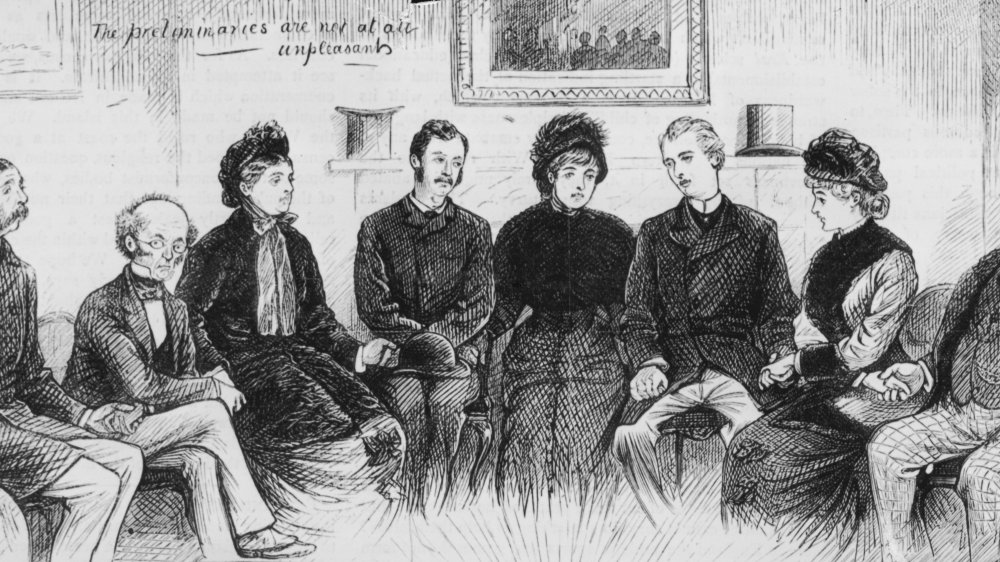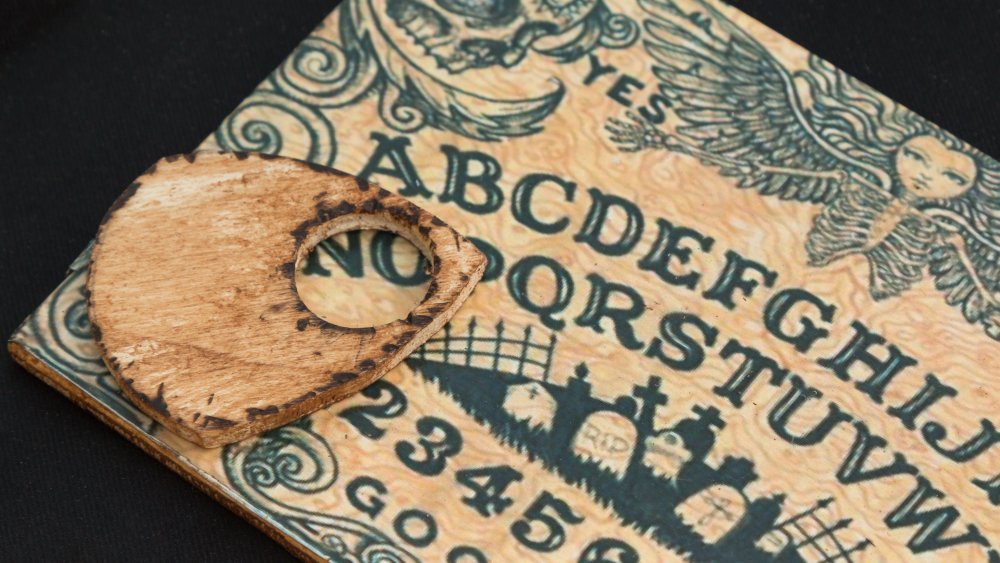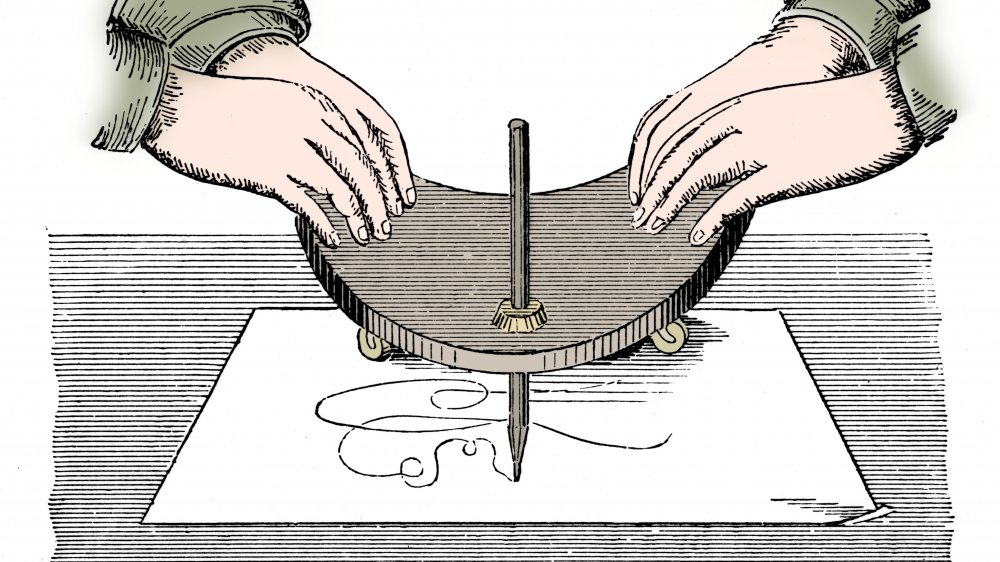The Surprising Way Ouija Boards Were Used During The Victorian Era
People in the Victorian era had some very interesting, and often very dark, pastimes. These dark hobbies fit because while medical advances had been made, life expectancy during this period was still 50 years.
Spiritualism was at an all-time high in the 19th century. So much so that seances became a fad and a fixture of social life to boot. It's in this environment that the Ouija board, or planchette, came about.
The Ouija board burst onto the scene in 1890, described Smithsonian Magazine, when Charles Kennard of Baltimore got together with other investors to patent a planchette to communicate with spirits. Planchette, French for little plank, had been used by some spiritualists since the 1850s. But Kennard's idea was to market the planchette. They even concocted a story that a medium asked the spirits what name the board should get. The spirits told her it wants to be called Ouija.
The Ouija board may have been invented in the United States, but it as based on a French idea. Even so, the Ouija board became a hit, especially in the United Kingdom. Baltimore Magazine claimed around 2,000 Ouija boards were sold a week in the early 1890s. Kennard created the Kennard Novelty Company and built two factories in Baltimore, two in New York, two in Chicago, and one in London to keep up with the demand. It was eventually sold to William Fuld, who coincidentally died in 1927 after falling from a factory the Ouija supposedly told him to build.
It was the perfect time to be invented
The Victorian era was perfectly ripe for spiritualism. It was a time when people started seeing the wonders of science and feared what it could bring. The British Library wrote the Victorian fascination with death, and the spirit world could be a reaction to all the scientific advancement. They were looking for religious and less logical explanations for things. After all, this was the era of creepy death photography.
Around this time, mesmerism, or manipulating the flow of "animal magnetism," and other forms of spiritualism became popular. Many famous people began attending seances to talk to the dead. It was a seance that ruined Arthur Conan Doyle and Harry Houdini's friendship.
A big part of these Victorian seances was the planchette, and eventually, it's mass-market version, the Ouija board. Many seances were held at private homes because the church declared speaking to the dead a sin. It was easier and cheaper to buy an Ouija board to contact your dear departed grandmother than hiring a medium or the more elaborate knock system developed by the Fox sisters, explained Bustle. Mediums actually hated the Ouija board because it cut out their role as a spiritual middleman. The historian Robert Murch told Smithsonian Magazine the Ouija board allowed the Victorians to believe they really could talk to their relatives who've passed. So they began using the Ouija board as a communication device, a very normal way to ask your family a question.
The Ouija board acted like a spiritual email
Of course, these days, we look at an Ouija board with suspicion. After all, why open a communication line to the spirit world and tempt disaster? The Victorians had no such fears. Talking to the dead wasn't inviting danger, it was exactly that, talking to the deceased. It appealed to many people and was even marketed as entertainment for the whole family, said Smithsonian Magazine. Apparently, they all thought your dead grandma really wants to be disturbed for her apple pie recipe.
Murch, a historian who studies Ouija boards, explained the Ouija board gains popularity in times of uncertainty. The Victorian era wasn't just a time of uncertainty brought about by scientific progress; it was also a time of war. The Civil War happened around this time, and people used Ouija boards to speak with their friends and family who fought. The board also became popular during the years after World War I and prohibition, and even during the Vietnam War.
Ouija boards remain popular today, reported Smithsonian Magazine, though our fascination with them turned to the spooky and macabre. The Victorians loved the Ouija board because it brought them closer to their dead relatives. After all, that's the whole reason why they have weird, dark pastimes in the first place.


